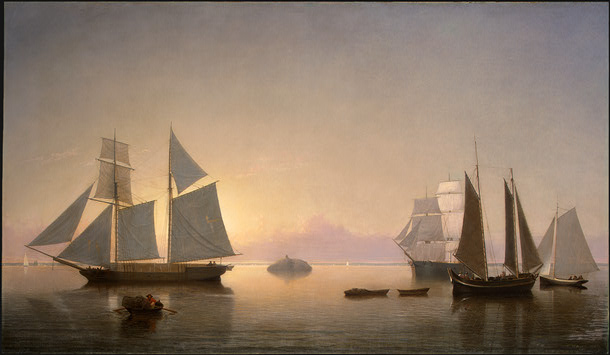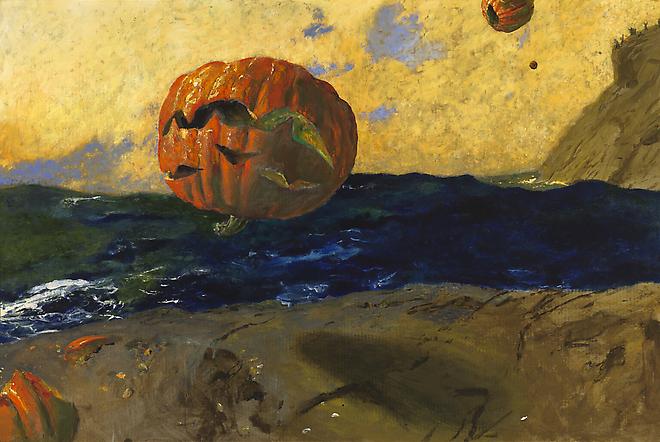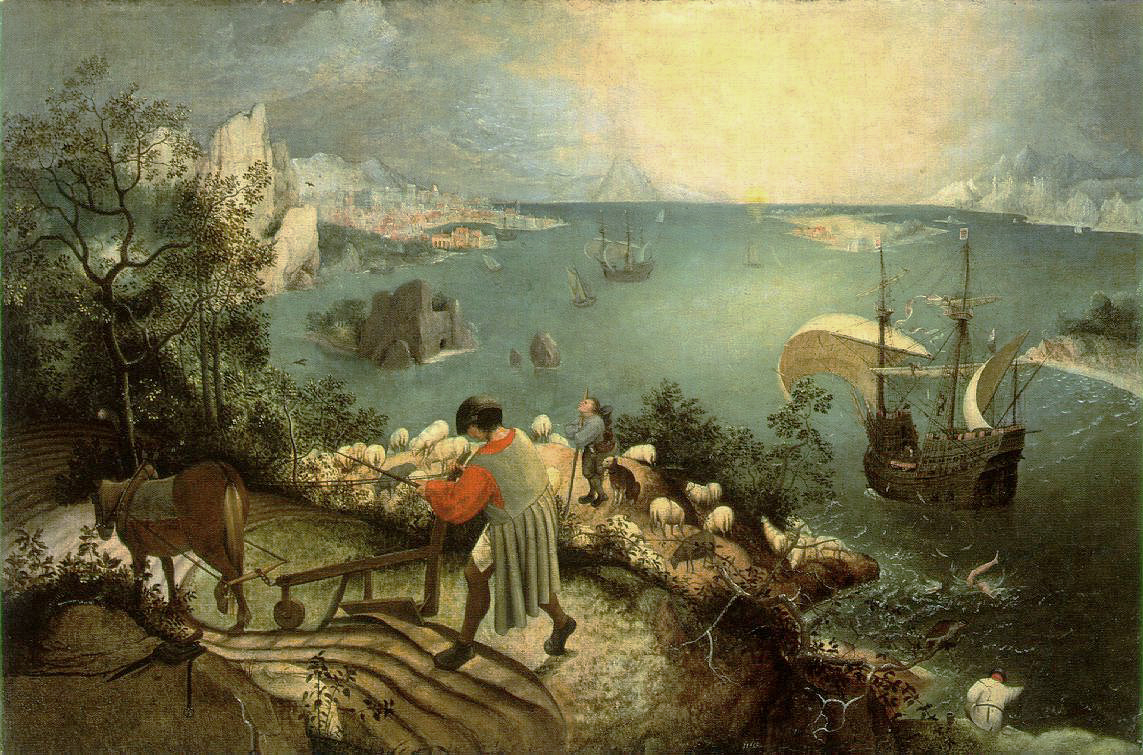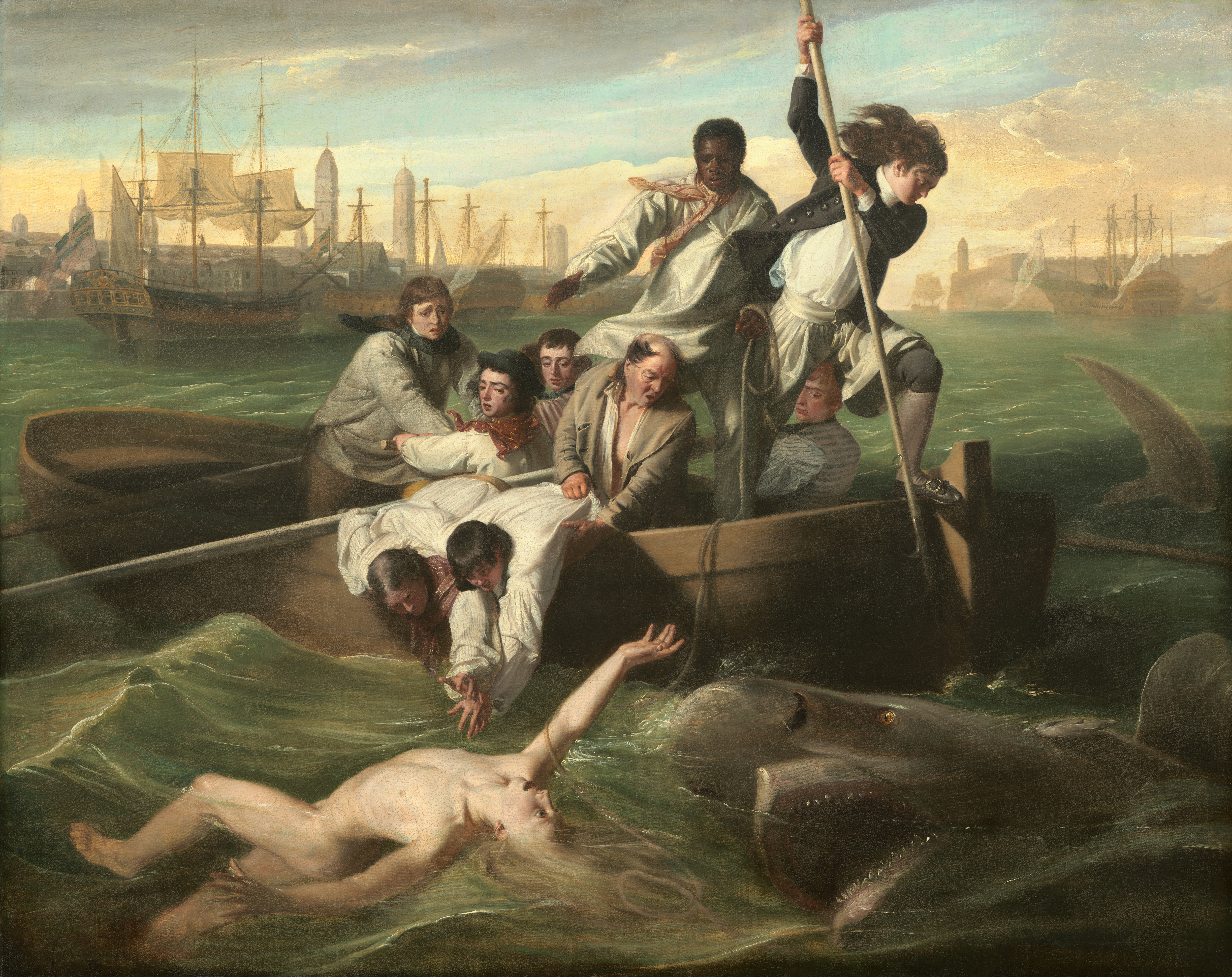A new acquisition which you can’t see until next summer, and thousands of historic photos you can browse at any time.
 |
|
The Lumber Schooner, Fitz Henry Lane, 1850, Penobscot Marine Museum
|
This summer an important painting by Fitz Henry Lane was donated to the Penobscot Marine Museumin Searsport. The Lumber Schooner has close ties to the local community. It’s been in the same family from the time it was painted in 1850 until it was left to the museum by the late Ellen Guild Moot.
Edward Dyer Peters was born in Blue Hill, ME in 1785. He and his brother John entered the lumber business in Ellsworth before he was fifteen years old. Ellsworth, located on the Union River, was a major lumber port. For example, in 1859, when the town’s population was 4,009, Ellsworth had nine sawmills, eight box-makers, thirteen shipbuilders, eight brickyards, five pail factories, two gristmills, one tannery, one carding machine, one pottery maker, two edge tool factories, and a carriage manufacturer.
 |
|
Ship in Fog, Gloucester Harbor, ca. 1860, Fitz Henry Lane, Princeton University Art Museum
|
At that time, the lumber trade in Maine was speculative. Lumber was cut here and shipped to Massachusetts, where it fetched whatever ship captains could get for it. In 1811, Peters founded the Davenport, Peters Co. and moved to Boston to act as a wholesale lumber agent. He maintained an inventory and sent orders back to Maine, thus establishing a stable price structure for Maine wood products. When he died in 1856, he was a very wealthy man.
By 1850, when this painting was made, Fitz Henry Lane was Boston’s most popular maritime painter. Born in Gloucester, he was steeped in saltwater. He likely would have followed his father into the sail-making trade had he not been paralyzed as a toddler from ingesting jimsonweed. After an abortive apprenticeship as a shoemaker, he returned to his first calling, art. He was largely self-taught, refining his skills while working at a lithography shop in Boston.
 |
|
Clipper Ship ‘Southern Cross’ Leaving Boston Harbor, 1851, Fitz Henry Lane
|
In addition to his views of Boston, Gloucester and the Maine coast, Lane did commissioned portraits of sailing vessels for Boston merchants. This painting, one of three bought by Peters, was probably such a commission, since it’s one of the modest lumber schooners of Maine upon which Peters built his fortune.
Lane often painted boats in close proximity. Whether this was artistic license or reflected the activity of the coastal shipping scene, I can’t say. Coastal waters were very busy in the 19th century. Penobscot Bay often saw more than 10,000 sailing vessels in a season. Shipping by water was (and remains) the cheapest way to move cargo long distances.
 |
|
Salem Harbor, 1853. Fitz Henry Lane, Museum of Fine Arts, Boston
|
Here, the lowly lumber schooner is seen off Gloucester’s Eastern Point Light, Boston-bound. There’s another coastal schooner, a fishing schooner, and a lone boat out fishing, all in a small patch of flurried water. Imagine creating such a scene of trucks on Interstate 90, and you begin to see the genius of Fitz Henry Lane.
You’ll have to wait until May to see this painting, but Penobscot Marine Museum has a great collection of maritime photographs that are perfect for curling up in front of the fire. The
National Fisherman Collection is a collection of pre-digital images of the commercial fishing industry. In 2012, Diversified Communications of Portland, ME, donated the magazine’s entire pre-digital archive to the Museum. Curators have already digitized, catalogued and released thousands of images. If you can’t find something there to amuse yourself, you’re not even trying.


















